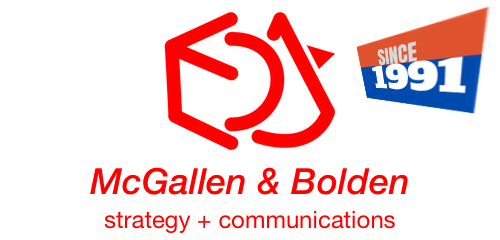We hear of layoffs in the thousands or tens of thousands from many big tech and other companies worldwide. Before the pandemic and global conflicts, many businesses were recruiting staff without restraint, and suddenly, they find themselves having more people than they need. Layoffs are never good for brands, especially in the context of employer branding. So, how can we weave public relations into our employer branding efforts?
Employer branding
First, we need to understand that employer branding is not business branding. Employer branding is a subset of business branding, and it centers on the communication to new talents and prospective talents, as well as strengthen internal communication with existing employees. What makes this company special? Why should someone work there?
Employer branding can leverage on public relations to communicate with the public through traditional media relations, but also through social channels, video, sponsored content, and more.
Who should be involved?
Don’t relegate employer branding to your human resource team. Employer branding should be helmed by your C-suite, with your human resources and communications teams in tandem. Work with your communications partners such as PR agencies and even advertising agencies to work on various media and sponsored content.
What makes you special?
Sure, remuneration is always a draw, except for a few. And no, it is not about how pretty your office is or how prestigious its address is. Neither is it about the buffet spread of food in the pantry. These are nice little perks for some, but may not matter for most.
Some of the more contemporary benefits prospective employees may look for, are the ability to work remotely, flexible work hours, mix-and-match benefits, or even a negotiation for flexible benefits for remuneration, and so on. Are there family-friendly benefits such as in-house child-care? What kind of medical and insurance benefits are there, especially if they are portable and can be continued even after employment ends?
People come in the way they are. Today’s generations of employees are looking for authenticity, warmth, acceptance, multi-lateral communication, and even vulnerability. The more transparent and vulnerable you are to your employees by simply being truthful and honest, the more endearing your brand is to employees or prospects.
The modern employee needs to keep abreast of the ever-evolving arena. So, does your business encourage learning? Does your business provides the means to do so, either by sponsorship of your employees to learning programs, or giving them time off? Are there structured in-house learning programs for everyone, and are these learning programs counted as work hours rather than expecting employees to spend even more time besides heavy workloads?
And who decides if you are special? Certainly you cannot audit yourself. If you are a sizable business, there may already be Internet and social chatter about the reputation of your business. If not, perhaps it is wise to conduct a brand audit for you as an employer. The survey should not identify people, but inputs.
Channels for employer branding
Media relations is certainly one method for employer branding. IF you have a specific initiative that makes your business different and appeal to large audiences, working with a retained PR agency to communicate that, especially in the Asia Pacific, would make sense.
Beyond media relations, let’s not forget social channels. LinkedIn is often touted as a useful branding platform for businesses. However, engagement on business pages tend to be low. So, for successful employer branding, work with your C-suite executives to get their LinkedIn pages active and talking. If you are strapped for ideas and time, work with your PR agency to develop consistent, succinct, and powerful content for posting on personal pages of these C-suite executives. Work with your C-suite executives to develop an authentic voice, rather than a bland and cold voice.
Video is also a great social channel to leverage on, if you can get your C-suite to participate in short question-and-answer format videos.
With the rise in dark social, such as Telegram and WhatsApp, you can also leverage their community channel capabilities to build communities for communication.
Your brand is sacred
With global recessionary and conflict pressures mounting, people will gravitate to businesses they trust, and hope that those businesses can house them for the long haul. While exciting perks and insane remuneration will surely attract some, more and more people, especially those with long-term commitments and dreams of having families, would be more interested to work with brands that can provide a sense of safety and security. This is an exciting time for businesses that have great value systems, honest and warm cultures, and collegial teams, to attract good people to work with them.
###

Dr Seamus Phan – Global C-suite Publicist & Strategist (Biochemist, Cybersecurity & Webdev pioneer, Author, Journalist) with 37 years of professional field experience.




